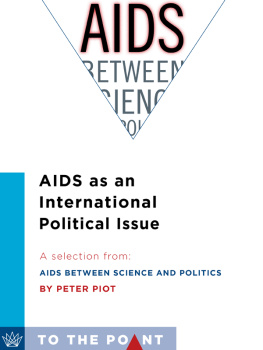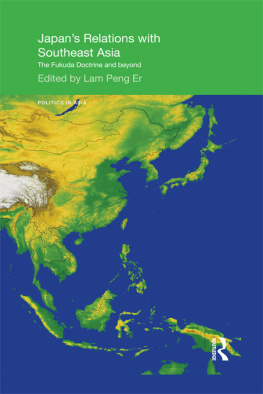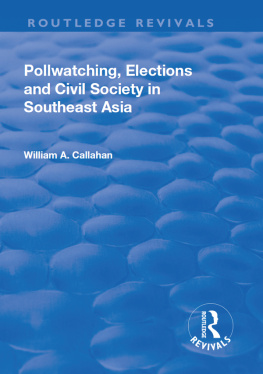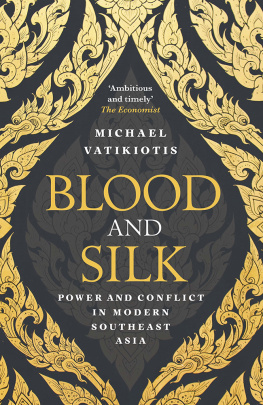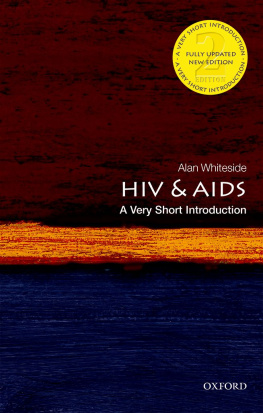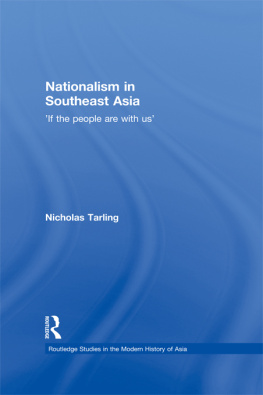Beyrer writes with the rigour of an outstanding scientist, and the compassion and energy of a tireless advocate.
Peter Piot, Director of the London School of
Hygiene & Tropical Medicine
Beyrer has an almost encyclopaedic knowledge of the global HIV epidemic that this book so richly describes. More than any other Western researcher, he understands the cultural and political factors that impact local epidemics.
Adeeba Kamarulzaman, Dean of the University of
Malaya Faculty of Medicine
Offers honest insights on sex between men, drug use, sex work, and transgender people in Southeast Asia. Chris Beyrer offers pragmatic solutions to inspire a new generation of leaders.
Midnight Poonkasetwattana, Asia-Pacific Community of
MSM Organizations (APCOM)
About the author
Chris Beyrer is the Desmond Tutu professor in
public health and human rights at Johns Hopkins
University, and was formerly president of the
International AIDS Society. He has extensive
experience in conducting international research
and training programs on HIV/AIDS around
the world, and has served as an advisor on HIV
prevention to international bodies including
the World Bank, the United States Office of
AIDS Research, and the Thai Red Cross. His
other published works include the edited
collection Public Health and Human Rights:
Evidence-Based Approaches (2007).
Imagine an end to AIDS.
We may now have the tools in hand to conquer this virus. We even have a target in sight the end of AIDS as a public health threat by 2030, put forward by the UN and widely embraced. It is not at all certain that we will achieve control of the greatest infectious disease epidemic of our time, already the killer of 40 million people. But with a renewed push, with universal access to treatment and the skillful use of new prevention tools, we might just break the back of AIDS. The very idea was unimaginable in the 1990s when I lived and worked in Southeast Asia the period of explosive spread of the virus among the peoples of the region.
War in the Blood was written in 19961997, and published in 1997. It was my first book. To my surprise and admitted delight it has stayed in print and continued to be read and used despite great changes in the HIV pandemic and the markedly altered political and social landscapes of Southeast Asia. But AIDS, the world, and your author have changed. It was past time for an update.
In 1996, effective treatment for HIV infection and clinical AIDS had come at last. For those fortunate women, men, and children living with the virus in the wealthiest countries, the dying of the 1980s and 1990s had abruptly stopped. We called this the Lazarus effect, after the biblical figure Christ raised from the dead. And in New York and San Francisco, London and Paris, Sydney and Amsterdam, desperately ill people truly did rise up from their beds, regain lost weight, recover resistance, live. The early regimens were complex and costly, some side effects brutal, and not everyone got on therapy in time to be saved. But this was a true watershed. The end of the death sentence.
For the peoples of Southeast Asia, indeed for the more than 90 percent of people living with the virus worldwide, the Lazarus effect of 1996 was a tantalizing rumor. Not only had treatment not become available for all but the wealthiest few it was barely being considered. Drug costs, then at around $22,000 per year, were prohibitive. Treatment regimens and the clinical management of AIDS patients was thought too complex for many fragile health systems. The foci of virtually all programs in the region remained on prevention, on stigma reduction, management of opportunistic infections, and, for those in the last stages of AIDS, palliative care. In re-reading and re-thinking this book, the most striking change from then till now is that the period the book covered was before the world committed to treatment in developing countries. The late 1990s were a searing interregnum when we had treatment and most with HIV had no hope of getting it. In 2016, as I write, we have marked an extraordinary milestone, not just in global health but in human solidarity, with 17 million people worldwide on treatment. And amazingly, most of those millions live in the most heavily burdened countries of the world South Africa, Kenya, Botswana, India, Thailand. The world truly did rally to the AIDS crisis.
The scale and scope of the AIDS treatment rollout was unprecedented, though it took a decade after the development of therapy before substantial numbers of lives would be saved. Treatment access began in earnest in 2003, seven years after triple therapy had been found effective, with the establishment of two landmark programs: UN Secretary-General Kofi Annans Global Fund to Fight AIDS, TB and Malaria (GFATM), and U.S. President George W. Bushs signature Presidents Emergency Fund for AIDS Relief (PEPFAR). PEPFAR began as a $15 billion, five-year commitment on the part of the Bush administration. It was primarily focused on Africa, with Haiti and Guyana in the Americas included, and just one country in Asia, Vietnam. PEPFAR had been memorably announced during the presidents 2003 State of the Union address. It came as a shock to many, including my partner (now husband) Mike and I, who watched that address, anxious to hear as were so many, what the President would say regarding the impending disaster of the Iraq invasion. We werent sure wed heard the short statement on AIDS correctly. Really? Fifteen billion dollars for global AIDS? Yes, as it turned out. A commitment which the Bush administration met, then exceeded, and which President Obama continued and expanded.
HIV treatment is now so simple, often a single tablet once a day, and so effective, that the term AIDS itself has a somewhat dated ring. Leaders in the field have questioned whether we should still be using it suggesting HIV disease as a better capture of the clinical spectrum were now working with where most people with the virus need never develop AIDS. Where treatment is available this has become an outpatient disease.
Later work would reveal an additional and transformative benefit to HIV treatment. Successful control of the virus in the bodys tissues and fluids, of viremia, renders those treated dramatically less infectious. This is true in sex, in pregnancy, and in breast feeding. Treatment is prevention. But the drugs only work if you take them. Inconsistent or episodic use can lead to the emergence of drug resistance and treatment failure. This can be an individual issue, say with someone with a chaotic life or it can be a problem of weak or dysfunctional health systems. Russia, to name one hard case, has been plagued by drug stock outs and shortages in her federal HIV treatment centers, challenging even the most committed patients and their providers.
How else has HIV changed? The research agenda has dramatically expanded and now includes an intense effort around a cure. One man, Timothy Brown, known as the Berlin Patient, has been demonstrably cured of HIV infection, several cases of long-term remission off therapy have been described, and young scientists worldwide have taken on HIV cure research as the next great scientific challenge in the field.


